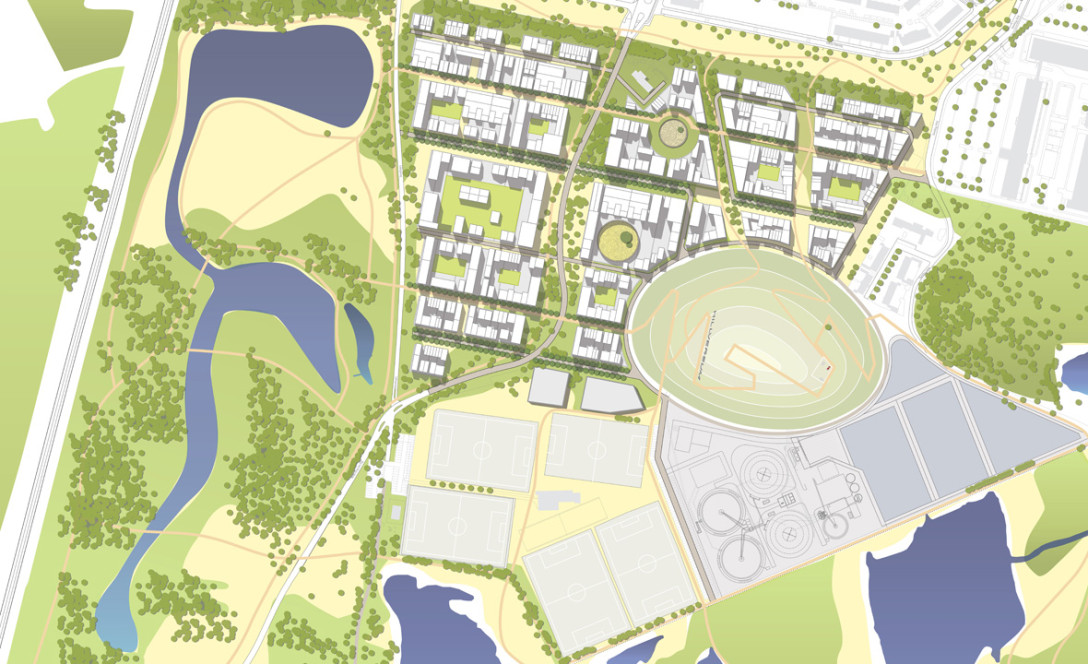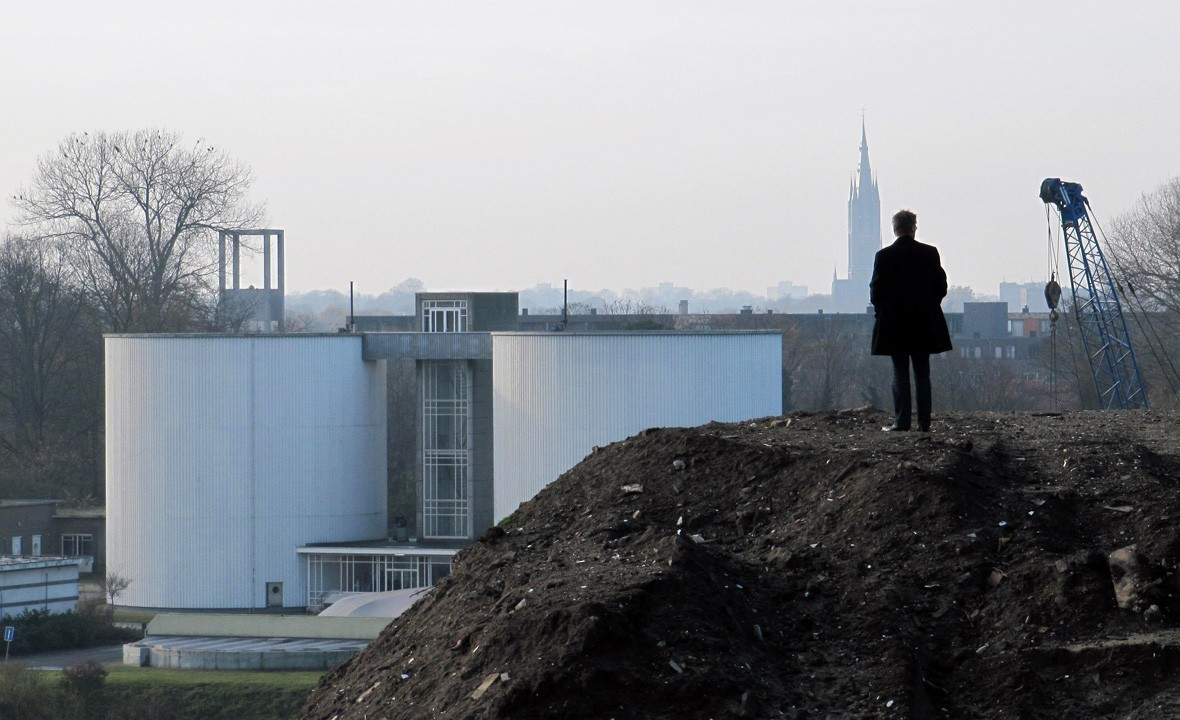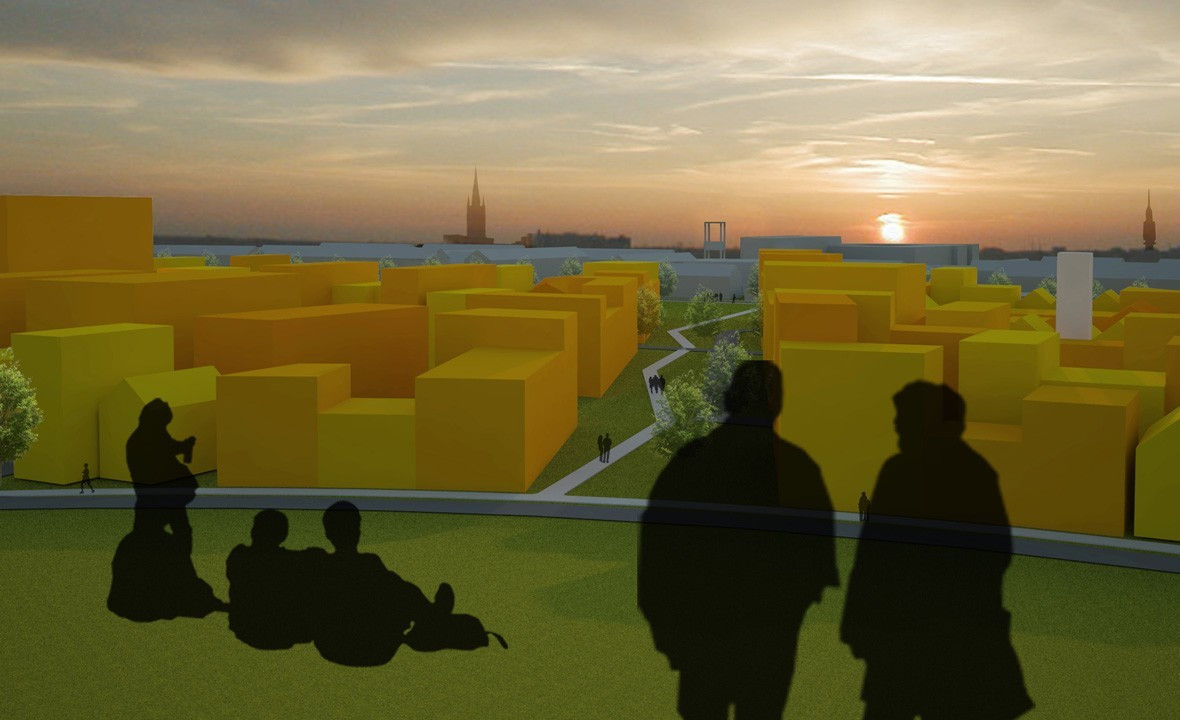


Anna’s Hoeve is located on the east side of Hilversum, adjacent to the beautiful urban outskirts designed by city architect Dudok and the Laarder Wasmeren nature area. The municipality wants to build more than 600 homes here: a sustainable district that can function as an exemplar, with a density of more than 50 dwellings per hectare and an ‘urban park’ character. Karres en Brands has drawn up an urban development plan that includes a great deal of flexibility, both in the pace of development and in the interpretation of different types of housing.


Currently, the location is occupied by a sewage treatment installation. With the advent of a new water treatment plant a bit further away, the site will be opened for the new district of Anna’s Hoeve. Right in the middle of the district is a 30-metre-high hill, constructed using the loose ground that will be generated during the remediation of the site and its surroundings. The urban development plan comprises ten modules, which together form the framework within which the plan can be developed.
Firstly, the plan further elaborates on Dudok’s typical practice of making ‘windows on the landscape’. Anna’s Hoeve is not only surrounded on three sides by woods and heathland, there are also strips of parkland in the new district that connect the neighbourhood with the surrounding landscape. Secondly, a design that follows in the tradition of Dudok also means beautiful streets. Hilversum’s streets are ‘green’, recognisable, and full of character. In Anna’s Hoeve, residents can say, ‘I live in the street with the oak trees, at number 17—you can easily find it.’

The third point focuses on space for housing. The building blocks are designed with varying widths. Together the blocks form a clear framework that is free to be filled in with homes. The fourth point has to do with ‘entrepreneurship’: there is room for a communal garden or a shared workspace in the courtyards. After all, the people who live in Hilversum, or who want to live there, work at home and have a workspace in the backyard. These garden sections can be built per lot, but can also be communally managed.
The fifth priority concerns flexibility in commissioning. The sites for construction are divisible, depending on demand. A clear framework thus offers the chance to respond to the challenge at hand: both with an assortment of buildings and a variety of builders. The sixth principle sees Anna’s Hoeve as sustainable, climate-friendly neighbourhood. Thus the available option to use the warmth from wastewater is fully exploited: the new sewage treatment plant supplies heat to Anna’s Hoeve.

The seventh principle involves a range of architecture within the blocks. While Dudok captured everything on the drawing board, simply having a flexible interpretation is welcome within the clear framework of Anna’s Hoeve. The eighth criterion is a specific position: ‘maximize revenues, not the number of homes’. Anna’s Hoeve has no fixed programme. It seeks to maximise financial returns by freely responding to the requirements of future residents.
The ninth principle covers the use of the existing topography and current structures. Some of the concrete utility buildings of the present treatment plant will be maintained, thereby lending history to the place. The plan concludes with the tenth point: ‘the Hilversum hill’. In the midst of the city, the name ‘Hilversum’ shines in large white letters from the mount—the newest location for film shoots.

| Location. | Hilversum, Netherlands |
|---|---|
| Assignment | Masterplan |
| Size | 13 hectare |
| Design | 2011 |
| Status | Competition entry |
| Client | Municipality of Hilversum |
| In collaboration with | Stadkwadraat, ARUP |